3.3.3. Safe Recruitment

Effective safeguarding in learning environments starts with hiring the right staff and volunteers, through a transparent and accountable process. Safer recruitment is the method of designing your recruitment process to deter unsuitable applicants from applying for roles with children, young people, and vulnerable adults and thereby prevent harm.
The
Safe Recruitment Process
- Define your recruitment strategy: Have written procedures to guide the recruitment process ensuring diversity and inclusion measures.
- Advertisements and applications: Ensure the job descriptions and adverts include your expectations and commitments to safeguarding.
- Shortlisting and Screening: Ensure safeguarding and inclusion are considered during the formation of shortlisting and interview panels. Conduct pre-screening of candidates' information provided, including for every recruitment gap.
- Interviews: Ask questions focussing on safeguarding and past experiences interacting/working with vulnerable persons.
- Offers and reference checks: Conduct backgrounds and reference checks. This includes Data Base System checks, qualification checks, reference checks and identity checks. Offers should be predicated upon successful reference checks.
- Onboarding: Ensure
that your orientation programme
includes compulsory safeguarding and a code of conduct module. Candidates
should sign the code of conduct and safeguarding-related policies as a sign of
commitment to adhere to these policies. During
the probation period, review processes, including safeguarding and the code of
conduct.
-
Performance Management:
Safeguarding needs to be integrated into institutional performance management processes. Performance conversations during the year should focus on how staff carried out their safeguarding responsibilities.

| Previous | Next |






